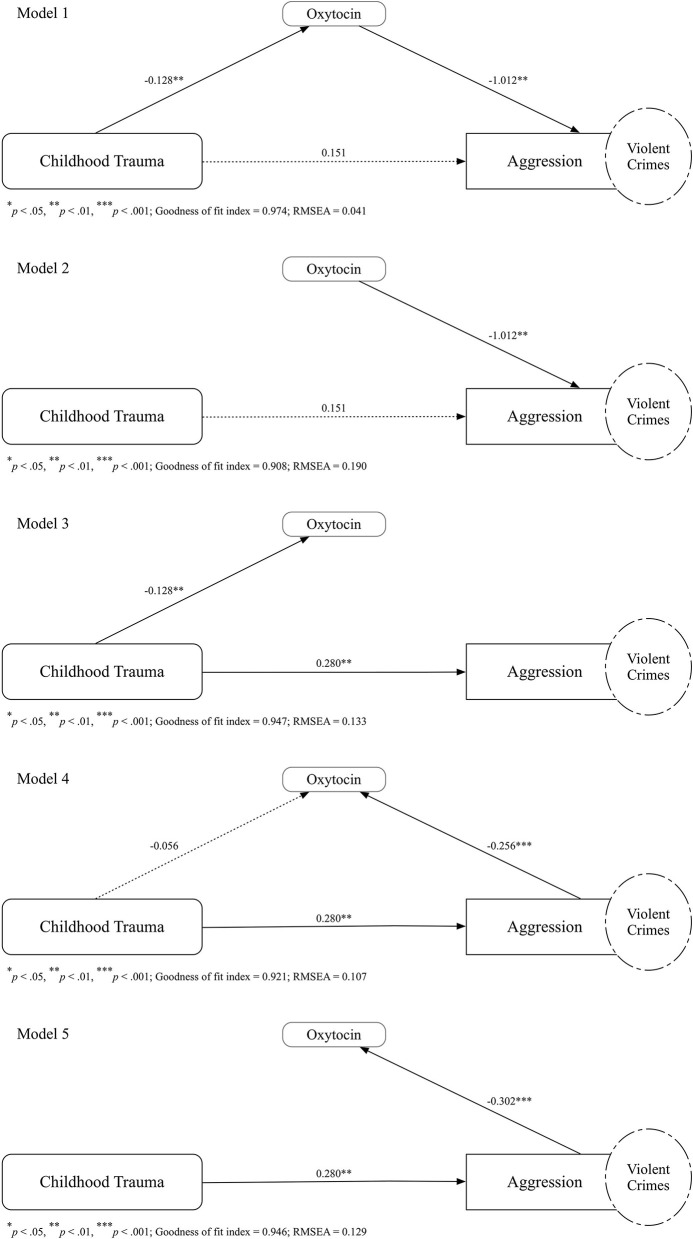Figure 2.
Path diagram illustrating the unstandardized regression coefficients for the relationship between childhood trauma and aggression, as mediated by levels of plasma oxytocin in persons convicted for homicide. Several theoretical hypotheses of the relationship between childhood trauma, aggression, and plasma oxytocin levels have been postulated: (Model 1) the relationship between childhood trauma and aggression was mediated by oxytocin, (Model 2) childhood trauma and oxytocin both contributed to aggression independently, (Model 3) childhood trauma was linked to both oxytocin and aggression independently, (Model 4) both childhood trauma and aggression contributed to changes in oxytocin and the childhood trauma also leading to aggression, and (Model 5) childhood trauma was linked to aggression while aggression subsequently promoting changes in oxytocin. The numbers above the arrows indicate the unstandardized regression coefficients of the path in the model. Fitness of the model was examined using a goodness of fit index (GFI) ≥0.90, and a root mean square error approximation (RMSEA) value of ≤0.06. The Model 1, as the best-fit model (GFI = 0.974; RMSEA = 0.041), shows that the effect of childhood trauma on aggression was mediated by plasma oxytocin levels among participants in the homicide group.

